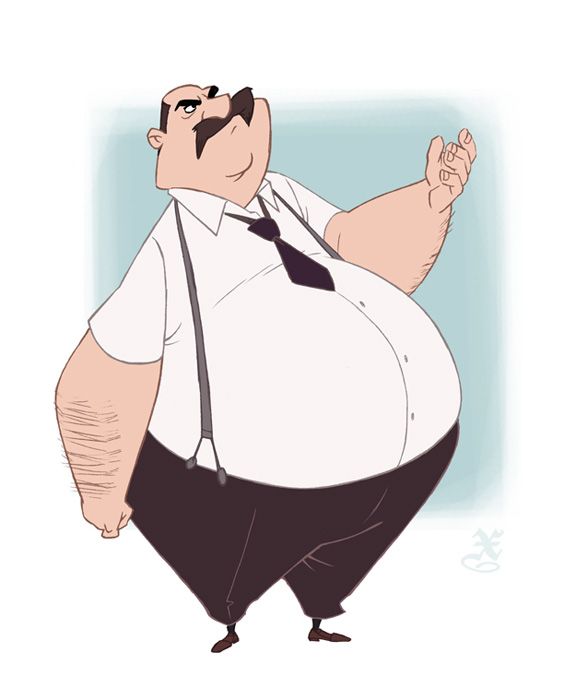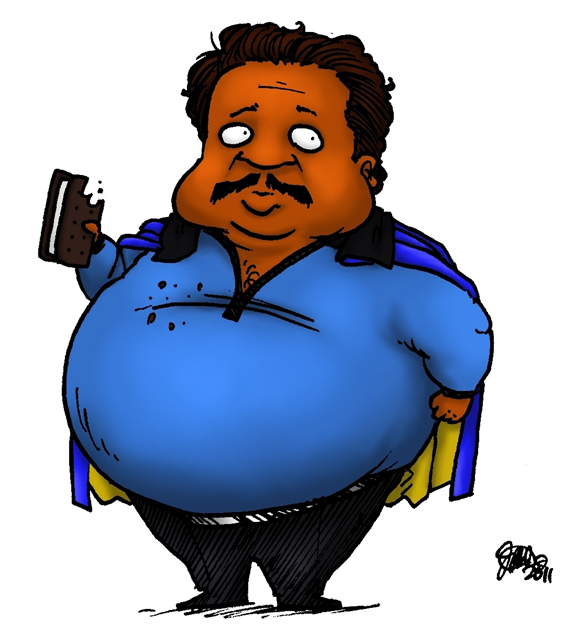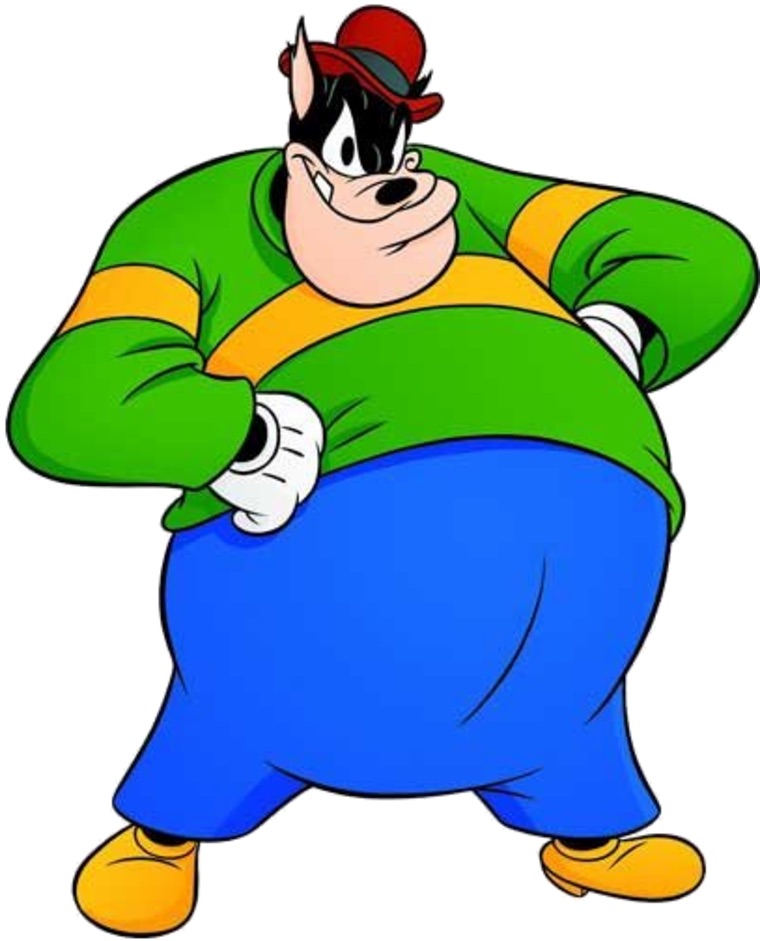When it comes to cartoon characters, size doesn’t always matter—but sometimes, it’s what makes them unforgettable. The fattest cartoon characters have left a big impression on pop culture, bringing humor, charm, and even life lessons to audiences worldwide. These characters are more than just their size; they’re icons who’ve taught us that being unique is what makes you special.
From Homer Simpson’s love for donuts to Garfield’s disdain for Mondays, these characters aren’t just big—they’re legendary. Their stories resonate with viewers because they often reflect real-life struggles and triumphs. Whether it’s about food, family, or friendship, these characters remind us that everyone deserves a seat at the table—or a box of pizza.
But why are we so fascinated by the fattest cartoon characters? Is it their humor, their personalities, or maybe just their sheer presence on screen? Let’s dive into this delightful world of oversized charm and explore why these characters have become such beloved figures in animation history.
Read also:Hottest Playboy Playmate Ever A Journey Through Time And Glamour
Table of Contents
- Introduction: Why Fat Cartoon Characters Matter
- A Brief History of Fat Cartoon Characters
- Famous Fat Cartoon Characters You Know and Love
- Common Traits That Make Them Iconic
- Garfield: The King of Cats and Comfort Food
- Homer Simpson: Donuts, Beer, and D'oh Moments
- Fun Facts and Stats About Fat Cartoon Characters
- Positive Representation in Animation
- The Cultural Impact of Fat Cartoon Characters
- Conclusion: Celebrating Size and Style
Why Fat Cartoon Characters Matter
Cartoons have always been a reflection of society, and fat cartoon characters are no exception. They bring diversity to the world of animation, showing that characters don’t need to fit a certain mold to be likable or relatable. These characters often tackle themes like self-acceptance, body positivity, and the importance of embracing who you are.
For example, think about Garfield. Sure, he’s lazy and loves lasagna, but he’s also loyal, witty, and full of personality. Or Homer Simpson, whose antics at the nuclear plant and his endless quest for donuts have made him one of the most recognizable characters in television history. These characters show us that being different isn’t a flaw—it’s a feature.
But it’s not just about the humor. Fat cartoon characters often deal with real-life issues like dieting, work-life balance, and relationships in ways that are both entertaining and educational. They remind us that everyone has value, regardless of their size or shape.
A Brief History of Fat Cartoon Characters
Believe it or not, fat cartoon characters have been around for almost as long as animation itself. One of the earliest examples is Disney’s Goofy, who first appeared in the 1930s. Goofy’s bumbling nature and oversized frame made him an instant hit with audiences. He wasn’t just a sidekick; he was a star in his own right.
Fast forward to the 1980s and 90s, where we saw the rise of characters like Garfield and Homer Simpson. These characters became cultural phenomena, breaking barriers and challenging stereotypes about what a cartoon character could be. They weren’t just sidekicks anymore—they were leading roles, and they were stealing the show.
Today, fat cartoon characters continue to evolve, appearing in shows like “Bob’s Burgers” and “Family Guy.” They bring a fresh perspective to animation, proving that there’s room for everyone in the world of cartoons.
Read also:Where Does Miguel Mora Live The Untold Story Behind The Hype
How Animation Evolved Over Time
As animation technology improved, so did the complexity of these characters. Early fat cartoon characters were often one-dimensional, serving as comic relief or comic foils. But as storytelling became more sophisticated, these characters gained depth and nuance. They became fully realized individuals with their own backstories, motivations, and quirks.
This evolution reflects a broader trend in media: the recognition that diversity is key to creating compelling stories. Fat cartoon characters are now celebrated for their individuality, not just their size.
Famous Fat Cartoon Characters You Know and Love
Let’s take a moment to appreciate some of the most iconic fat cartoon characters in history. These characters have left an indelible mark on pop culture, and their influence continues to be felt today.
- Garfield: The lasagna-loving cat who hates Mondays and loves his owner, Jon Arbuckle.
- Homer Simpson: The lovable oaf from Springfield who works at a nuclear plant and has a serious donut addiction.
- Porky Pig: The stuttering Warner Bros. character who’s been around since the 1930s.
- Krusty the Clown: Homer’s favorite clown and a recurring character in “The Simpsons.”
- Patrick Star: SpongeBob’s best friend and a pink starfish with an insatiable appetite for food and fun.
These characters have become cultural touchstones, representing everything from humor to heart. They remind us that size doesn’t define a character—it’s what’s inside that counts.
Common Traits That Make Them Iconic
What makes fat cartoon characters so memorable? It’s not just their size—it’s their personalities, quirks, and the way they interact with the world around them. Here are some common traits that make these characters stand out:
- Humor: Fat cartoon characters often bring the laughs, whether it’s through slapstick comedy or clever wordplay.
- Relatability: Despite their larger-than-life personalities, these characters often deal with everyday problems like work stress, family dynamics, and food cravings.
- Heart: Beneath their comedic exteriors, these characters often have a deep well of emotion and empathy. They care about their friends and family, even if they don’t always show it.
- Uniqueness: Each character brings something different to the table, whether it’s Garfield’s sarcasm or Homer’s bumbling nature.
These traits make fat cartoon characters more than just jokes—they’re fully realized individuals who resonate with audiences on a deeper level.
Garfield: The King of Cats and Comfort Food
No discussion of fat cartoon characters would be complete without mentioning Garfield. Created by Jim Davis in 1978, Garfield has become one of the most iconic cartoon characters of all time. His laziness, love of food, and disdain for Mondays have made him a household name.
But there’s more to Garfield than just his size. He’s a complex character who often reflects on life, love, and the meaning of existence. His relationship with his owner, Jon Arbuckle, and his dog, Odie, is a central part of his appeal. Despite his grumpy exterior, Garfield has a big heart and a deep love for his friends and family.
Here’s a quick look at Garfield’s stats:
| Name | Garfield |
|---|---|
| Species | Cat |
| Creator | Jim Davis |
| First Appearance | 1978 |
| Favorite Food | Lasagna |
Why We Love Garfield
Garfield’s appeal lies in his relatability. Who among us hasn’t wanted to skip work on a Monday or indulge in our favorite comfort food? He’s the embodiment of our inner desires and fears, making him a character we can’t help but love.
Homer Simpson: Donuts, Beer, and D'oh Moments
Another fat cartoon character who deserves a shoutout is Homer Simpson. As the patriarch of the Simpson family, Homer has become a cultural icon. His love for donuts, beer, and his family has made him one of the most beloved characters in television history.
Homer’s antics at the Springfield Nuclear Power Plant have provided countless laughs over the years. Whether he’s trying to invent a new product or just trying to survive another day at work, Homer always manages to find himself in ridiculous situations. But beneath his bumbling exterior lies a man who loves his family deeply and will do anything for them.
Here’s a quick look at Homer’s stats:
| Name | Homer Simpson |
|---|---|
| Occupation | Nuclear Safety Inspector |
| Family | Marge (wife), Bart, Lisa, Maggie (children) |
| Favorite Food | Donuts |
| First Appearance | 1989 |
Why We Love Homer Simpson
Homer Simpson is more than just a fat cartoon character—he’s a symbol of the modern family. His struggles with work, parenting, and relationships are things we can all relate to. And despite his flaws, he’s always there for his family when it matters most.
Fun Facts and Stats About Fat Cartoon Characters
Here are some fun facts and stats about fat cartoon characters that might surprise you:
- Garfield has appeared in over 2,500 comic strips since his debut in 1978.
- Homer Simpson has been featured in more than 700 episodes of “The Simpsons.”
- Porky Pig was the first major star of Warner Bros. cartoons.
- Patrick Star’s voice actor, Bill Fagerbakke, is a real-life marine biologist.
- Krusty the Clown was originally voiced by Dan Castellaneta, who also voices Homer Simpson.
These stats show just how influential fat cartoon characters have been in shaping the world of animation.
Positive Representation in Animation
One of the most important aspects of fat cartoon characters is their role in promoting positive representation. For too long, fat characters were relegated to the sidelines, serving as comic relief or comic foils. But today, these characters are taking center stage, showing that size doesn’t define a person—or a cartoon character.
This shift is important because it helps break down stereotypes and promote acceptance. It shows young viewers that everyone deserves to be seen and heard, regardless of their size or shape. And it sets a positive example for future generations of animators and storytellers.
Breaking Stereotypes
Characters like Garfield and Homer Simpson have played a key role in breaking down stereotypes about fat people. They’re not just lazy or gluttonous—they’re complex individuals with their own strengths and weaknesses. This kind of representation is crucial for promoting diversity and inclusion in media.
The Cultural Impact of Fat Cartoon Characters
The cultural impact of fat cartoon characters cannot be overstated. They’ve influenced everything from fashion to food to family dynamics. They’ve taught us valuable lessons about self-acceptance, friendship, and the importance of being true to yourself.
These characters have also inspired countless fans around the world. From cosplay to merchandise, they’ve become a part of our everyday lives. They’ve even spawned entire industries, from Garfield-themed restaurants to Homer Simpson action figures.
But perhaps the most important impact these characters have had is on the way we view diversity in media. They’ve shown us that everyone has a story worth telling, and that size doesn’t determine a character’s value or worth.
Conclusion: Celebrating Size and Style
In conclusion, fat cartoon characters are more than just jokes—they’re cultural icons who’ve taught us valuable lessons about life, love, and laughter. They’ve shown us that being different isn’t a flaw—it’s a feature. And they’ve reminded us that everyone deserves to be seen and heard, regardless of their size or shape.
So the next time you watch a cartoon featuring a fat character, take a moment to appreciate their unique qualities. Whether it


